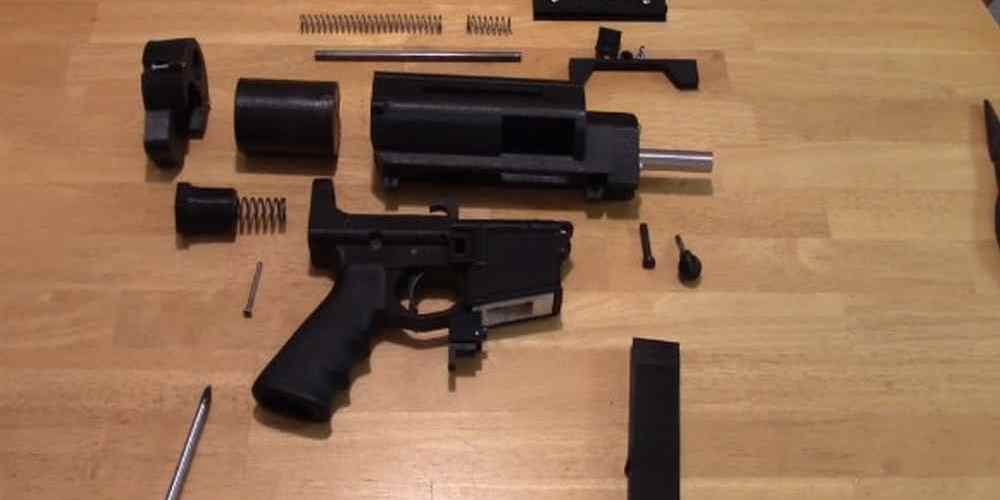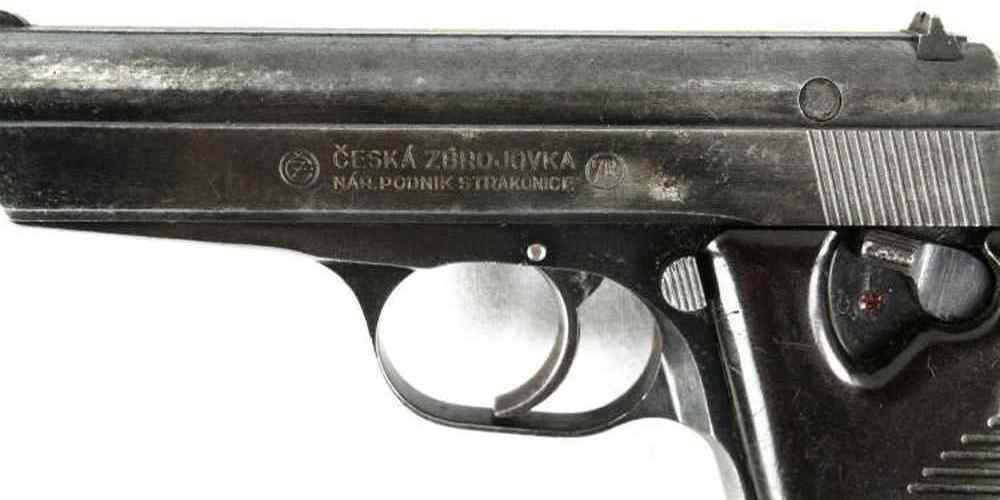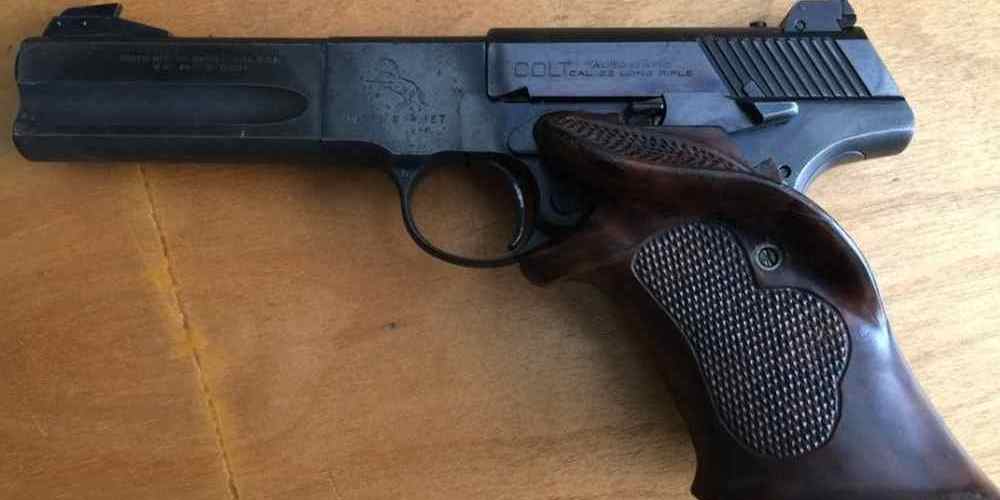“Your go-to resource for keeping your gas-operated semi-auto pistol running smoothly.”
Importance of Regular Maintenance for Gas-Operated Semi-Auto Pistols
Gas-operated semi-auto pistols are popular firearms among gun enthusiasts for their reliability, accuracy, and ease of use. However, like any mechanical device, these pistols require regular maintenance to ensure optimal performance and longevity. In this guide, we will discuss the importance of regular maintenance for gas-operated semi-auto pistols and provide some tips on how to keep your firearm in top condition.
One of the key components of a gas-operated semi-auto pistol is the gas system, which is responsible for cycling the action and chambering a new round after each shot. The gas system consists of a gas port, gas block, piston, and operating rod, all of which work together to harness the gas pressure generated by the fired cartridge to drive the action of the pistol.
Regular maintenance of the gas system is crucial to prevent malfunctions and ensure smooth operation of the pistol. Over time, carbon and fouling can build up in the gas port and gas block, causing the pistol to malfunction or fail to cycle properly. By cleaning these components regularly, you can prevent these issues and keep your pistol running smoothly.
To clean the gas system of your pistol, start by disassembling the pistol according to the manufacturer’s instructions. Once you have access to the gas system components, use a solvent and a cleaning brush to remove any carbon buildup and fouling. Be sure to pay special attention to the gas port and gas block, as these are the areas most prone to fouling.
After cleaning the gas system, inspect the components for any signs of wear or damage. If you notice any issues, such as a worn piston or a damaged gas block, it is important to replace these parts as soon as possible to prevent further damage to the pistol.
In addition to cleaning and inspecting the gas system, it is also important to lubricate the components regularly to ensure smooth operation. Use a high-quality gun oil to lubricate the piston, operating rod, and other moving parts of the gas system. Be sure to follow the manufacturer’s recommendations for lubrication to prevent over-lubrication, which can attract dirt and debris.
Regular maintenance of the gas system is not only important for the performance of your pistol but also for your safety. A poorly maintained gas system can lead to malfunctions, misfires, and other dangerous situations. By taking the time to clean, inspect, and lubricate the gas system of your pistol regularly, you can prevent these issues and enjoy a safe and reliable shooting experience.
In conclusion, regular maintenance of the gas system is essential for the proper functioning of gas-operated semi-auto pistols. By cleaning, inspecting, and lubricating the gas system regularly, you can prevent malfunctions, ensure smooth operation, and extend the life of your pistol. Remember to follow the manufacturer’s recommendations for maintenance and always prioritize safety when handling firearms. With proper care and maintenance, your gas-operated semi-auto pistol will serve you well for years to come.

Common Issues with Gas Systems in Semi-Auto Pistols
Gas-operated semi-automatic pistols are popular among gun enthusiasts for their reliability and ease of use. However, like any mechanical system, gas systems in semi-auto pistols can encounter issues that may affect their performance. In this article, we will discuss some common issues that gun owners may encounter with gas systems in semi-auto pistols and provide tips on how to maintain and troubleshoot these problems.
One common issue that gun owners may encounter with gas systems in semi-auto pistols is carbon buildup. Carbon buildup can occur over time as a result of firing rounds through the pistol. This buildup can clog the gas ports and piston, leading to malfunctions such as failure to cycle properly or failure to eject spent casings. To prevent carbon buildup, it is important to regularly clean and lubricate the gas system components.
Another common issue with gas systems in semi-auto pistols is gas leaks. Gas leaks can occur due to worn or damaged seals or O-rings in the gas system. If you notice a decrease in performance or a decrease in gas pressure, it may be a sign of a gas leak. To fix this issue, you will need to inspect the gas system components for any signs of wear or damage and replace any faulty seals or O-rings.
One of the most frustrating issues that gun owners may encounter with gas systems in semi-auto pistols is inconsistent cycling. Inconsistent cycling can be caused by a variety of factors, such as improper gas system adjustment, weak recoil springs, or dirty or worn components. To troubleshoot this issue, it is important to first check the gas system adjustment and ensure that it is set correctly for the type of ammunition being used. If the gas system is properly adjusted, you may need to inspect and clean the gas system components and replace any worn or damaged parts.
Another common issue that gun owners may encounter with gas systems in semi-auto pistols is excessive recoil. Excessive recoil can be caused by a variety of factors, such as improper gas system adjustment, worn or damaged recoil springs, or a dirty or clogged gas system. To reduce excessive recoil, it is important to first check the gas system adjustment and ensure that it is set correctly for the type of ammunition being used. If the gas system is properly adjusted, you may need to inspect and clean the gas system components and replace any worn or damaged recoil springs.
In conclusion, gas systems in semi-auto pistols are reliable and efficient mechanisms that can provide years of trouble-free use. However, like any mechanical system, gas systems in semi-auto pistols can encounter issues that may affect their performance. By understanding common issues with gas systems in semi-auto pistols and following proper maintenance and troubleshooting procedures, gun owners can ensure that their pistols continue to function properly and reliably for years to come.
How to Properly Clean and Lubricate Gas Systems
Gas-operated semi-automatic pistols are popular firearms due to their reliability and ease of use. However, like any mechanical device, they require regular maintenance to ensure optimal performance. One crucial aspect of maintaining gas-operated pistols is cleaning and lubricating the gas system. In this guide, we will walk you through the steps to properly clean and lubricate the gas system of your semi-auto pistol.
Before we dive into the cleaning process, it’s essential to understand how the gas system works. Gas-operated pistols utilize the gas generated from firing a round to cycle the action and chamber a new round. This gas is directed through a series of ports and tubes to drive the slide back and eject the spent casing. Over time, carbon and fouling can build up in these ports and tubes, causing malfunctions and reducing the pistol’s reliability.
To begin cleaning the gas system, first, ensure the pistol is unloaded and the magazine is removed. Disassemble the pistol according to the manufacturer’s instructions, paying close attention to the gas system components. These typically include the gas block, gas tube, and piston. Using a cleaning rod and patches soaked in solvent, carefully clean the inside of the gas block and tube, removing any carbon buildup or fouling. A small brush can also be used to scrub away stubborn deposits.
Next, inspect the piston for any signs of wear or damage. If necessary, replace the piston with a new one to maintain optimal performance. Once the gas system components are clean, dry them thoroughly with a clean cloth or compressed air. It’s crucial to ensure no solvent or debris remains in the gas system, as this can cause malfunctions when firing the pistol.
After cleaning the gas system, it’s time to lubricate the components to reduce friction and ensure smooth operation. Apply a small amount of high-quality gun oil to the gas block, tube, and piston, ensuring even coverage. Be careful not to over-lubricate, as excess oil can attract dirt and debris, leading to malfunctions.
Once the gas system components are lubricated, reassemble the pistol following the manufacturer’s instructions. Cycle the action several times to distribute the oil and ensure everything is functioning correctly. It’s a good idea to perform a function check to verify that the pistol cycles properly and locks back on an empty magazine.
In addition to regular cleaning and lubrication, it’s essential to inspect the gas system periodically for signs of wear or damage. Check for cracks, corrosion, or excessive wear on the gas block, tube, and piston. If any components show signs of wear, replace them immediately to prevent malfunctions and ensure the pistol’s reliability.
By following these steps to properly clean and lubricate the gas system of your gas-operated semi-automatic pistol, you can maintain optimal performance and reliability. Regular maintenance is key to ensuring your pistol functions flawlessly when you need it most. So take the time to care for your firearm, and it will serve you well for years to come.
Upgrades and Modifications for Improved Gas System Performance
Gas-operated semi-automatic pistols are popular among gun enthusiasts for their reliability and ease of use. However, like any mechanical device, these pistols require regular maintenance to ensure optimal performance. One crucial aspect of maintaining a gas-operated pistol is taking care of its gas system. In this guide, we will discuss upgrades and modifications that can improve the performance of your pistol’s gas system.
One common issue with gas-operated pistols is gas leakage, which can lead to decreased performance and reliability. Upgrading to high-quality gas seals and O-rings can help prevent gas leakage and ensure a tight seal between the gas system components. Additionally, regularly inspecting and replacing worn or damaged seals can help maintain the efficiency of the gas system.
Another upgrade that can improve the performance of your pistol’s gas system is installing a high-quality gas block. A gas block is a crucial component of the gas system that regulates the flow of gas from the barrel to the piston. Upgrading to a precision-machined gas block can improve gas flow and reduce the risk of malfunctions.
In addition to upgrading individual components, modifying the gas system as a whole can also improve performance. One popular modification is adjusting the gas system’s gas port size. By increasing or decreasing the size of the gas port, you can fine-tune the amount of gas that is used to cycle the pistol’s action. This can help improve reliability and reduce recoil.
Another modification that can improve gas system performance is installing an adjustable gas block. An adjustable gas block allows you to easily adjust the amount of gas that is used to cycle the pistol’s action. This can be particularly useful if you are using different types of ammunition or if you want to reduce recoil.
When making upgrades and modifications to your pistol’s gas system, it is important to follow the manufacturer’s guidelines and consult with a qualified gunsmith if necessary. Improperly installing or adjusting gas system components can lead to malfunctions and safety hazards.
In conclusion, maintaining the gas system of your gas-operated semi-automatic pistol is essential for optimal performance. Upgrading and modifying the gas system can help prevent gas leakage, improve gas flow, and fine-tune the amount of gas used to cycle the pistol’s action. By following the tips outlined in this guide, you can ensure that your pistol’s gas system operates smoothly and reliably.
Troubleshooting Gas System Problems in Semi-Auto Pistols
Gas-operated semi-auto pistols are popular firearms due to their reliability and ease of use. However, like any mechanical device, they can experience issues with their gas system that may affect their performance. In this guide, we will discuss common gas system problems in semi-auto pistols and how to troubleshoot them effectively.
One of the most common issues with gas-operated semi-auto pistols is gas leakage. This can occur due to worn or damaged seals, loose fittings, or a cracked gas block. If you notice a decrease in the pistol’s performance or a change in the recoil pattern, it may be a sign of gas leakage. To troubleshoot this issue, inspect the gas system components for any signs of wear or damage. Tighten any loose fittings and replace any damaged seals or parts as needed.
Another common problem with gas-operated semi-auto pistols is carbon buildup in the gas system. This can lead to malfunctions such as failure to cycle properly or erratic ejection patterns. To address this issue, it is important to regularly clean the gas system components using a solvent and a brush. Pay special attention to the gas port, gas block, and piston to ensure that they are free of carbon buildup. Regular maintenance will help prevent this issue from occurring and keep your pistol functioning smoothly.
In some cases, a gas system problem in a semi-auto pistol may be caused by an improperly adjusted gas block. If the gas block is set too low, the pistol may not cycle properly, leading to failures to eject or feed. On the other hand, if the gas block is set too high, the pistol may cycle too aggressively, causing excessive recoil and wear on the components. To troubleshoot this issue, adjust the gas block according to the manufacturer’s recommendations and test fire the pistol to ensure that it cycles properly.
One of the most serious gas system problems in semi-auto pistols is a cracked gas tube. This can occur due to overpressure or excessive wear on the component. A cracked gas tube can lead to gas leakage, loss of pressure, and potential safety hazards. If you suspect that your pistol’s gas tube is cracked, it is important to replace it immediately to prevent further damage and ensure the pistol’s safe operation.
In conclusion, gas system problems in semi-auto pistols can affect their performance and reliability. By understanding common issues such as gas leakage, carbon buildup, improperly adjusted gas blocks, and cracked gas tubes, you can troubleshoot these problems effectively and keep your pistol in top condition. Regular maintenance and inspection of the gas system components are essential to prevent issues from occurring and ensure that your pistol functions smoothly. If you encounter a gas system problem that you are unable to resolve on your own, it is recommended to seek assistance from a qualified gunsmith or firearms expert. By taking care of your gas-operated semi-auto pistol, you can enjoy years of reliable and accurate shooting.







